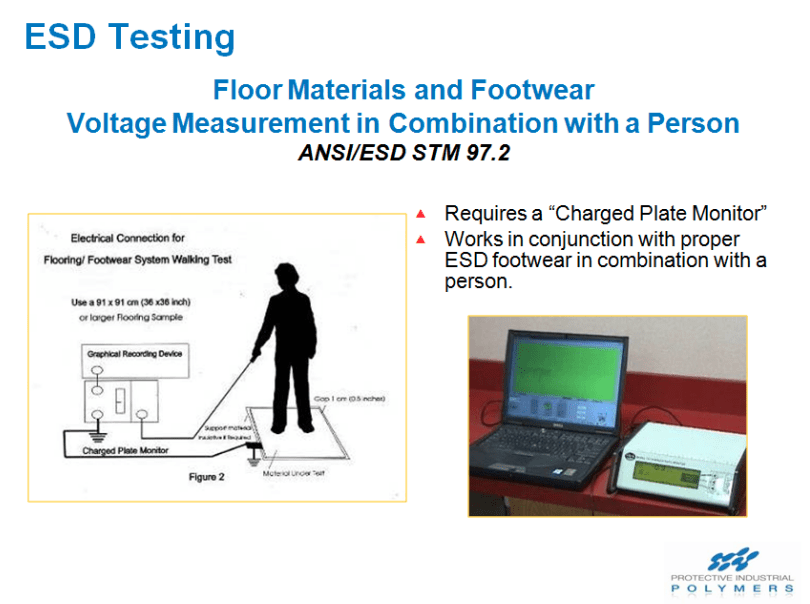Recently, a discussion of footwear variance came up while meeting with the ESD expert for an electronic manufacturing service provider with multiple international facilities. He was attempting to understand the variability of shoe performance results. They were running multiple walking tests per ANSI/ESD STM 97.2 on static dissipating flooring surfaces with similar surface resistance. He wanted to know if I knew of a shoe that was more consistent and offered more predictable results with the static control flooring. I explained that despite the appearance of uniform performance, the variance was likely in his esd floor coatings and not footwear.
ESD floors will typically transfer a charge to ground through a “facilitated pathway”. Conductive contact points within the floor surface carry a charge through the topping to a subsurface ground plane that completes the discharge to ground. The number and location of these points will cause a significant variation in performance for two distinct reasons:
- The efficiency or amount of surface contact between the foot and the floor varies dramatically. The availability of conductive contact points could be as low as 10% of the floor surface. This lowers the quality of the connection to the floor and ultimately to ground.
- The non-conductive portion of the floor surface is typically a highly insulated material such as nylon, vinyl or some type of polymer. Contact and separation with this portion of the floor actually generates a charge and alters the test results.
Shoes are not the only thing affected by the availability of conductive contact points. ESD chair castors, drag chains and heel straps only have a small amount of contact surface. When combined with a floor surface with “facilitated pathway” design, serious variation in performance and compliance can occur because the probability of not contacting the grounding points at all is much higher.
In areas where consistent BVG (Body Voltage Generation) or walking test results are desired, the most efficient conductive floor surface possible is required. Protective Industrial Polymers “Surface Ground Plane” floor coating systems offer the most conductive surface available. Esd floor coatings are important for these types of floors. There are no facilitated pathways and the entire flooring surface is the ground plane that directly transfers any charge straight to ground.
Want to learn more about Surface Ground Plane ESD flooring systems? Download our latest whitepaper entitled “Surface Ground Plane ESD Floors – The Best Way to Protect ESD-Sensitive Components” 


